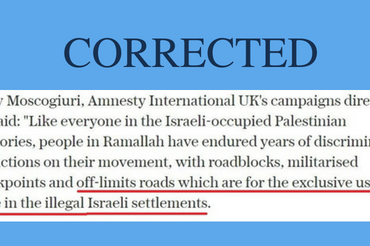A few days ago we commented on various aspects of the BBC’s special report entitled “Life in the Gaza Strip“. Among the (unsourced) statistics given in that report is a poverty level of 39% and an unemployment rate of 30% in general and 58% among 20 to 24 year olds.
(For some perspective on those latter two figures, here is the latest Eurostat report on unemployment in the EU showing, inter alia, that Andalucia in Spain has an unemployment level of 30.4% and that youth unemployment in Cueta stands at 65.8%.)
The map below – also produced by the BBC – dates from February 2004: roughly three and a half years into the second Intifada and over three years before Hamas’ violent take-over of the Gaza Strip and the subsequent partial blockade. It quotes a poverty level of 75% in 2003 and unemployment rates of 28% in 2003 and 46.5% in September 2002.
But surely that cannot be right? Poverty and unemployment cannot (according to the impression we are given by the media) have been higher before the partial blockade aimed at curbing weapons smuggling into the Gaza Strip was implemented. Index Mundi , using CIA World Factbook statistics, shows that poverty levels and unemployment rates indeed reached those approximate levels at the time.
What the graphs do not show, however, is the relationship between those statistics and events on the ground at the time.
One of these days, perhaps the BBC will begin to inform its audiences about the connection between the decisions made by the Palestinian leadership to engage in terror and the welfare of the Palestinian people.








